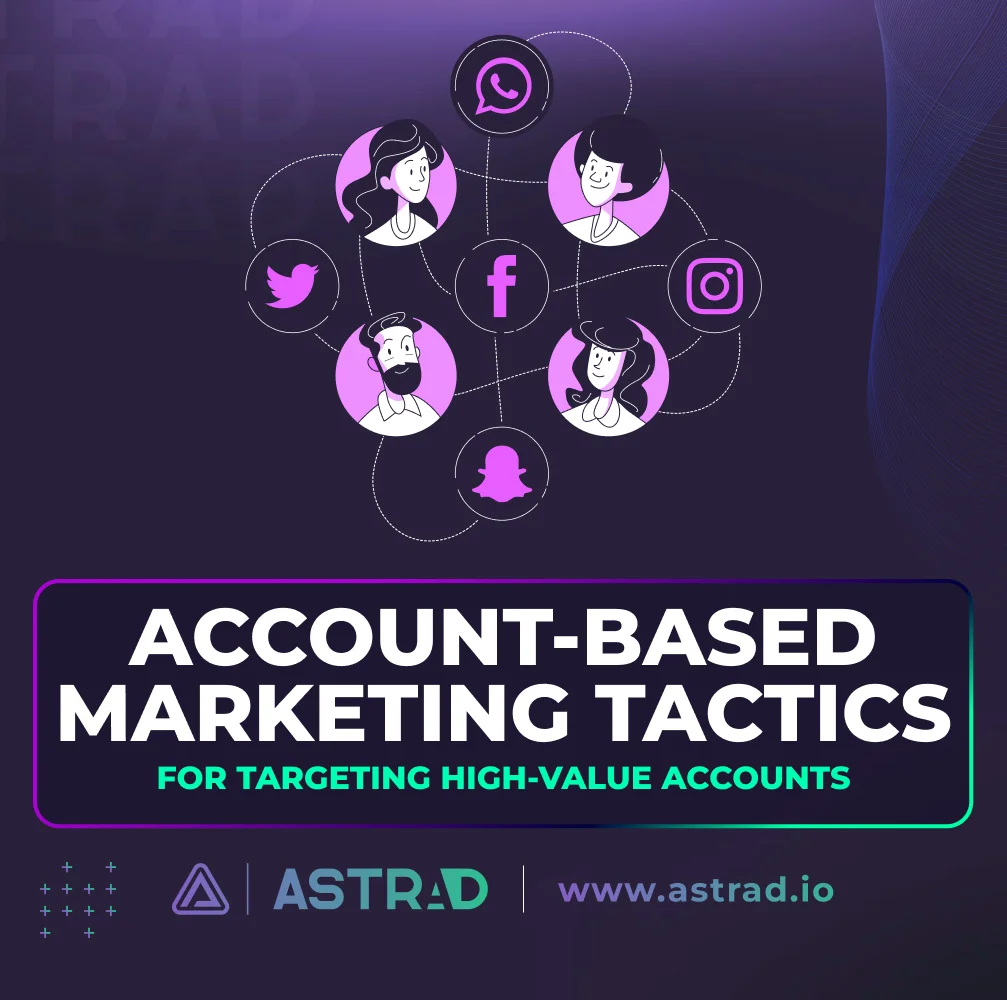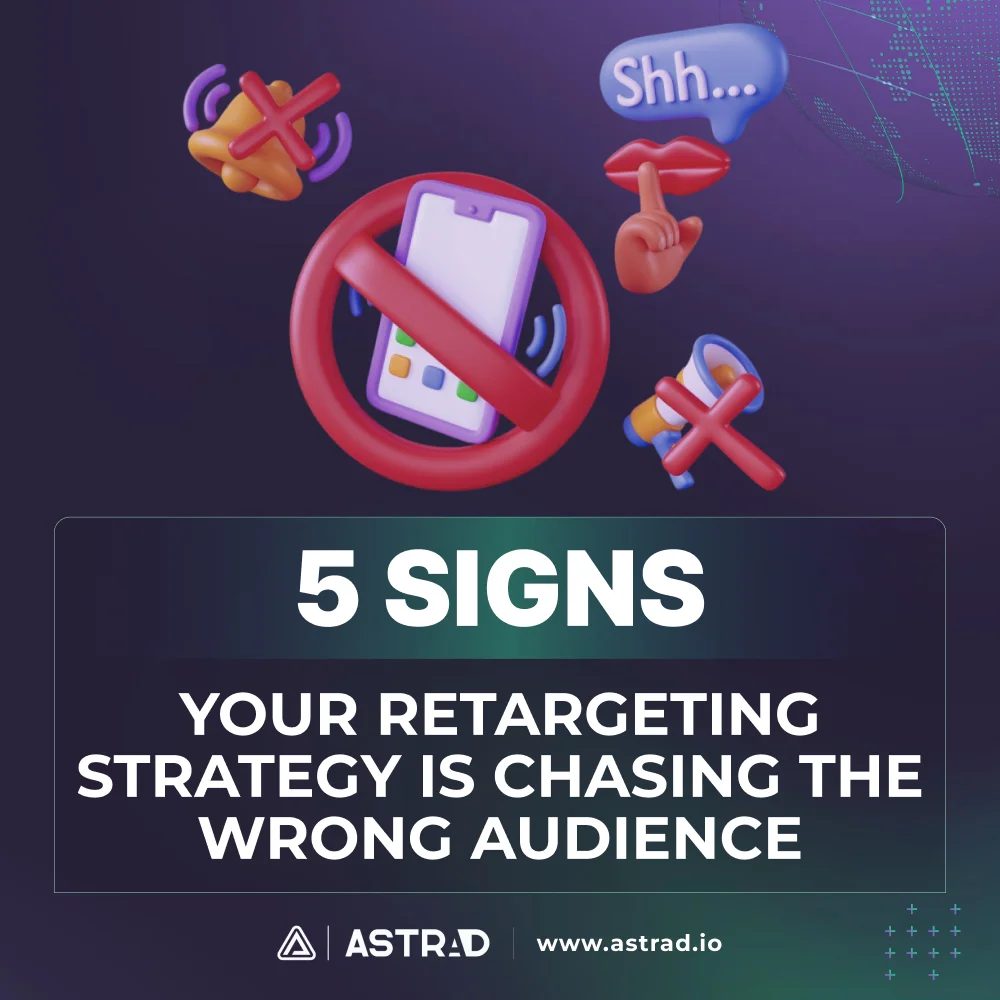In the B2B world, targeted account-based marketing (ABM) helps you snag high-value clients through personalized outreach. It’s the equivalent of taking that big fish out for some fine dining, buttering them up, and then giving them the pitch — only in digital form. This sharp focus lets you invest resources wisely and get the most out of your marketing budget. By tailoring messages and account-based marketing tactics to each account’s specific needs, you can turn them into loyal customers, boosting your overall marketing impact.
Account-Based Marketing (ABM) and B2B Marketing
Account-Based Marketing (ABM) is a strategic approach in B2B marketing that concentrates on a defined set of high-value accounts. ABM focuses on creating personalized campaigns designed to resonate with the specific needs and challenges of each target account. This involves close collaboration between sales and marketing teams to identify key decision-makers, craft targeted messaging, and develop programs that nurture deep relationships.
The significance of ABM in B2B marketing lies in its efficiency and effectiveness. By prioritizing high-value accounts, businesses can maximize their return on investment (ROI) by allocating resources more strategically. ABM also allows for a more personalized approach, which can lead to higher engagement and conversion rates compared to traditional marketing tactics. Ultimately, ABM helps B2B companies build stronger relationships with their most important customers, driving predictable revenue growth.
In the next sections, we’ll dive into the strategic world of Account-Based Marketing (ABM), specifically focusing on effective tactics to zero in on high-value accounts. By leveraging these techniques, B2B businesses can craft targeted campaigns that resonate with their ideal customers, ultimately driving higher engagement and conversion rates.
ABM vs. Traditional Marketing Approaches
Traditional marketing resembles casting a wide net with generic messages hoping to attract potential customers. ABM, on the other hand, is a strategic approach focusing on meticulously identifying and engaging a defined set of high-value accounts. Here’s a breakdown of the key differences:
Target Audience:
- Traditional Marketing: Broad audience defined by demographics or general industry.
- ABM: Specific and pre-defined accounts with high potential value.
Marketing Approach:
- Traditional Marketing: “One size fits all” messaging across various channels.
- ABM: Personalized campaigns tailored to the unique needs, challenges, and decision-makers of each target account.
Sales & Marketing Alignment:
- Traditional Marketing: Teams may operate with separate goals and strategies.
- ABM: Close collaboration between sales and marketing is required to identify accounts, craft messages, and nurture relationships.
Metrics & Measurement:
- Traditional Marketing: Focuses on metrics like brand awareness, website traffic, or lead generation.
- ABM: Tracks account-specific metrics like engagement levels, pipeline progression, and, ultimately, revenue generated from closed deals.
Benefits:
- Traditional Marketing: Broader reach and potentially attracting new customers you weren’t aware of.
- ABM: Higher ROI due to focused resource allocation and personalized engagement, leading to increased conversion rates and larger deals with high-value accounts.
Crosshairs On — The Importance of Account Identification
Identifying the right accounts is the cornerstone of a successful ABM strategy. By thoroughly researching and selecting accounts that perfectly align with your ideal customer profile (ICP) and demonstrate high growth potential, you ensure your ABM efforts are laser-focused.
This targeted approach allows you to tailor messaging and engagement tactics to resonate with each account’s specific needs and decision-makers, ultimately maximizing your chances of converting them into loyal and high-value customers.
How to Select High-Value Accounts — The Tools Used for Account Identification
Selecting high-value accounts for ABM requires a multi-pronged approach. First, clearly define your Ideal Customer Profile (ICP) – this outlines the characteristics of companies that are the best fit for your product or service. Look for factors like industry, size, budget, and decision-making structure. Next, consider financial health and growth potential – prioritize accounts with a strong track record and opportunities for future expansion.
Utilize CRM systems, sales intelligence tools, and market research to gather insights into target accounts. Finally, consider the decision-makers within these accounts – identify key individuals and their pain points to personalize your outreach.
Account-Based Marketing Tactics
ABM is about crafting a personalized bullseye to maximize engagement and conversion. Here are key account-based marketing tactics to consider:
Personalized Messaging and Content
ABM thrives on tailoring messages that address the specific needs and challenges of each target account. Research their industry trends, pain points, and recent news. Develop content showcasing success with similar companies or white papers tackling their specific challenges. This personalized approach demonstrates your deep understanding of their business, fostering trust and interest.
Omnichannel Engagement
ABM leverages a multi-pronged approach to reach decision-makers across various channels. This might include targeted social media campaigns, personalized email outreach referencing relevant industry articles, or even direct mail with premium content addressing their specific needs.
Strategic Content Delivery
Delivers valuable content at key points in the decision-making process. This targeted approach ensures your content resonates at the right time, guiding accounts toward a purchase decision.
ABM Marketing Tactics for Success
Here are some of the best ABM tactics key to consider:
Account Insights Gathering
Utilize various tools to gather in-depth insights into your target accounts that resonate with their specific needs. This might involve social listening to understand their online conversations, industry reports to identify their challenges, and even financial data to assess their growth potential.
Targeted Advertising
Leverage account-based advertising (ABA) platforms to target your ideal accounts across various online channels. This could involve programmatic advertising, displaying your message on websites your target accounts frequently, or social media retargeting campaigns showcasing relevant content.
Direct Outreach Programs
Craft email campaigns tailored to specific decision-makers within the target account, referencing their recent activity or challenges. Consider personalized video messages from sales reps or industry experts addressing their pain points directly.
Event Marketing
Look for industry conferences or webinars where key decision-makers from your target accounts are likely to attend. Sponsor relevant events or host exclusive briefings tailored to their specific needs. Use these events to build relationships, showcase your expertise, and move them further down the sales funnel.
Strategic Content Delivery
Targeted ABM tactics are a game-changer when it comes to reaching high-value accounts. By abandoning scatter-shot marketing for a laser-focused approach, you personalize messaging and engagement to resonate with each account’s unique needs and decision-makers. This fosters trust, increases engagement, and ultimately converts high-value prospects into loyal customers.
A well-executed ABM strategy is more than just a marketing tactic; it is a strategic advantage that allows you to build strong and personalized relationships with key accounts, driving predictable revenue growth and maximizing the impact of your marketing efforts in the competitive B2B landscape.






